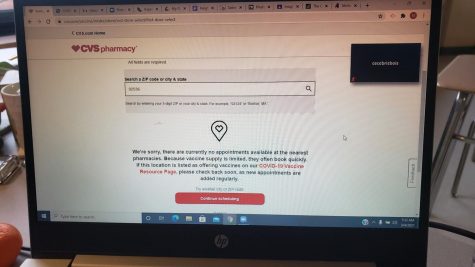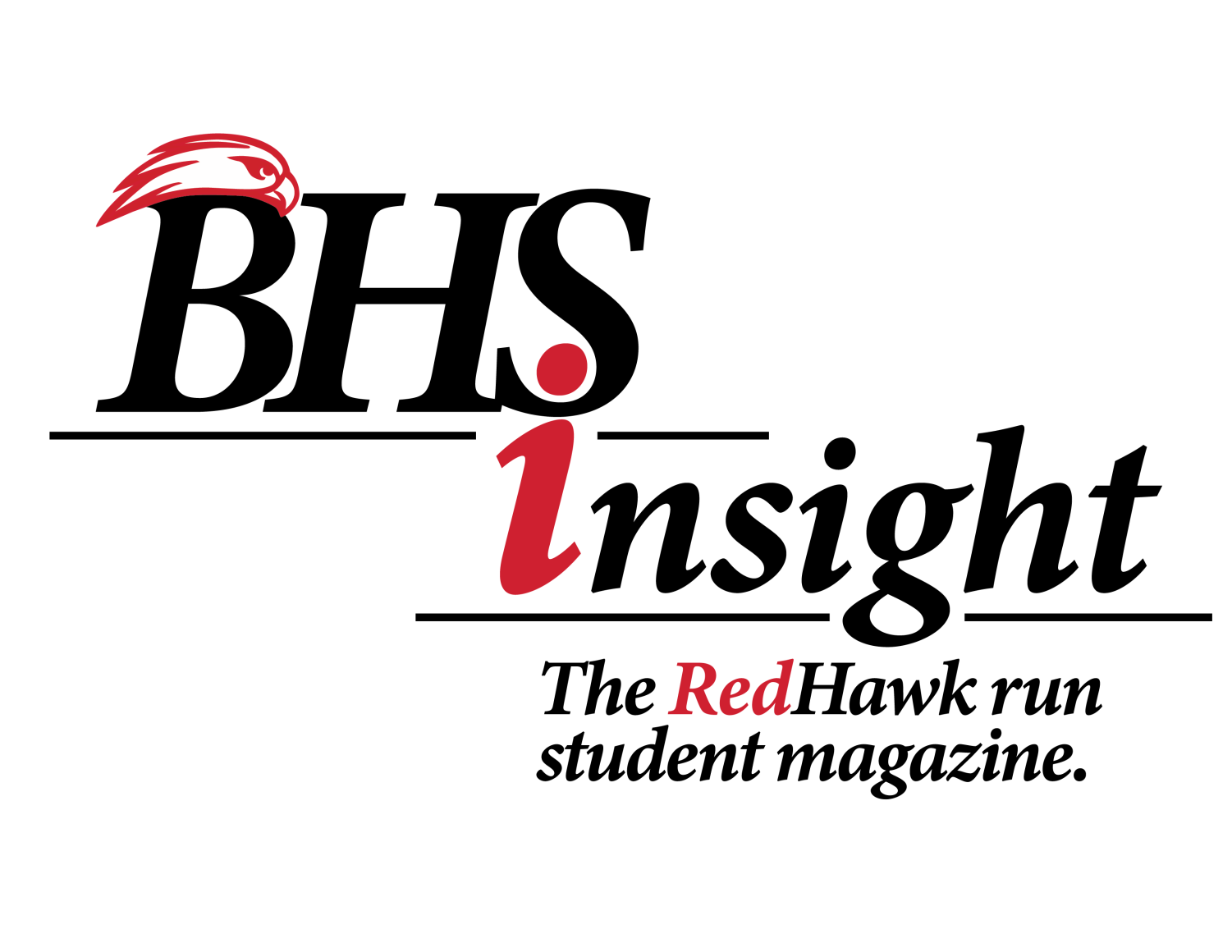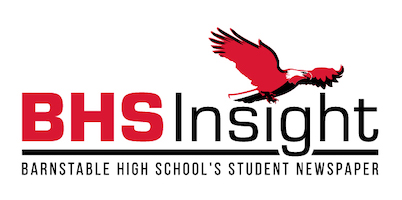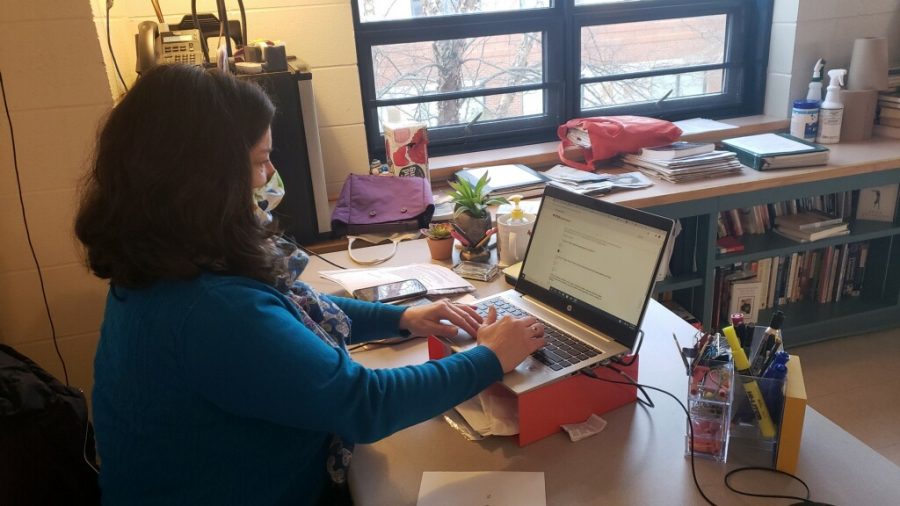The Road to Student and Teacher Vaccinations
Photo by Nick Kallipolites
Barnstable High School teacher Michele Netto attempts to schedule a vaccine appointment.
April 8, 2021
Despite a recent spike in cases on Cape Cod that caused the Barnstable Public Schools to go remote again, the light at the end of the COVID-19 tunnel draws closer as more demographics become eligible for one of the three (at the time of writing) FDA-approved vaccines. Phase 1 of Massachusetts’s plan began in December 2020 with medical staff, first responders, and long-term assisted care facility workers falling under this category. Phase 2 expanded the requirements to any individual above 75, people above 65 with two comorbidities, and then K-12 educators. The Baker-Polito administration recently announced a schedule to begin rolling out vaccines to the general public, considered phase 3, starting on April 19.
However, the state of Massachusetts only began distributing vaccines on March 11th. Before that point, people within eligible groups had to go through private companies in order to obtain a dose for themselves or a family member. Those companies have links on their websites to schedule an appointment, but with a large amount of traffic and requests, it was often to race in the morning to schedule the limited amount of appointments for that week. K-12 educators were one such group eligible to be vaccinated, and many teachers at Barnstable High School seized the opportunity.
“Trying to get an appointment really did feel like the Hunger Games but Ms. Knittle helped me out…I was so glad to get my appointment at Gillette and then go get my first dose,” said world language teacher Victoria Miklosky.
“I took my 79-year-old stepmom to Gillette and got the first of two shots a few weeks ago. She gets all the credit for successfully navigating the website and securing our two slots,” said physics teacher Kenneth Holland.
However, for some teachers and members of the community, getting vaccinated has a much stronger sense of urgency and poignancy.
“I am super excited to be vaccinated. My dad passed away from COVID-19 in November of last year, he was only 72 and in relatively good health. I can’t wait for everyone to be inoculated,” said science teacher Beth Anderson.
There are three COVID-19 vaccines approved for distribution in the US — the Pfzifer-BioNTech, Moderna, and Johnson & Johnson vaccines. Pfzifer and Moderna vaccines require two shots spaced three or more weeks apart, while the J&J vaccine only requires a single dose. The difference between the two types can be found in how the microbiologists engineered the proteins to respond within the human body.
“mRNA are the instructions for building proteins. On the outside of viruses, there are specific proteins. So the Pfzifer and Moderna vaccines contain the mRNA to make the COVID-19 virus proteins. Once your cells take in the mRNA from the vaccine, your cells then make the COVID-19 proteins. Your immune system then detects the new protein, realizes its foreign, and attacks it. This is how the vaccine teaches the immune system how to fight COVID-19,” said Anderson.
The J&J vaccine uses a traditional method of injecting DNA into your body, which then provides the directions for the mRNA to create the proteins. The Pfzifer-BioNTech and Moderna vaccines skip this step entirely but require two doses because of it. Although the J&J vaccine may be more expensive to produce, it has been reported to be more cost-effective in the long run because only one dosage has to be manufactured for each person instead of two. Additionally, it does not have to be refrigerated at subzero temperatures, which means it can be rolled out more easily to rural areas.
All three vaccines currently available are highly effective at preventing COVID-19. According to the Centers for Disease Control and Prevention, the Pfzifer-BioNTech vaccine reported a 95% efficacy rate, Moderna reported 94.1%, and Johnson & Johnson reported a 66.3% efficacy rate. The lower rate from the Johnson & Johnson vaccine is not uncommon, as routine flu shots have an average efficacy rate of about 50% during clinical trials. However, where the J&J vaccine fell short in comparison to the other vaccines on preventing COVID-19 infections it made up for with the number of hospitalizations and deaths after contracting the virus — zero. No one who got COVID-19 four weeks after receiving the J&J vaccine either had to be hospitalized or died. There is also potential evidence towards the vaccine preventing asymptomatic infection, where a person gets COVID-19 but does not fall ill; however, the CDC is not completely sure about this aspect of the vaccine’s effectiveness yet.
At the time of publication, the J&J and Moderna vaccines are only approved for use in people aged 18 and older, while the Pfzifer-BioNTech vaccine is approved for use in people aged 16 and older. Trials have only recently begun for children under the age of 16, and there is currently no information or testing being conducted for toddlers and infants. Even with these effective age ranges, people still have to fall under one of the eligible demographics in order to schedule an appointment. This means most students are still ineligible and will continue to be for an unknown period of time. However, teacher’s assistants are grouped under the educator demographic, so some students may have the opportunity to get vaccinated.
“I had to drive to Boston but it was totally worth it,” said senior Marguerite Pronovost.
One important aspect of the vaccination process is that different vaccines cannot be mixed. Appointments cannot be scheduled for one type of vaccine and then you return for the second dosage of a different vaccine. Once you are given the first dose of a specific vaccine, whether it’s Pfzifer-BioNTech’s or Moderna’s, the second dose must be from the same vaccine. This does not apply to the J&J vaccine because it is only one dose.
With more options and routes to securing a COVID-19 vaccine, the hope of the Biden administration is to have a majority of the population inoculated by the end of the year. However, safety is still the number one priority of both the administration and the state alike.



